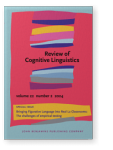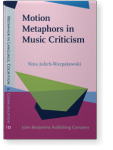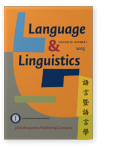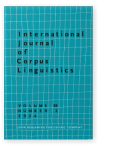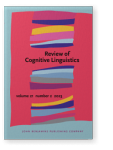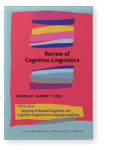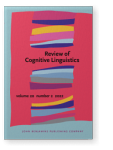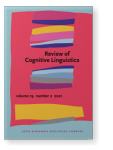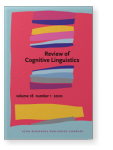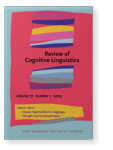Fuyin Li
List of John Benjamins publications for which Fuyin Li plays a role.
Journal
Book series
2025 Review of Traugott (2022): Ten Lectures on a Diachronic Constructionalist Approach to Discourse Structuring Markers Language and Linguistics 26:1, pp. 190–197 | Review
The Ten Lectures on a Diachronic Constructionalist Approach to Discourse Structuring Markers represents a pioneering work in bridging historical linguistics, cognitive linguistics, and pragmatics. This review first provides a background of the book, then outlines of contents of each lecture,… read more
2024 Image schemas and ( point )- to-point event model for the macro-event Review of Cognitive Linguistics: Online-First Articles | Article
The macro-event is a fundamental concept in Talmyan motion event typology. A large literature has been documented concerning the status of a particular language in the two-way typology that he proposes, but relatively little literature focusing on the morphosyntactic dimension of the macro-event… read more
2024 Modeling the locative alternation in Mandarin Chinese: A corpus-based study International Journal of Corpus Linguistics 29:2, pp. 258–285 | Article
The current study investigates the probabilistic conditioning of the Mandarin locative alternation. We adopt a corpus-based multivariate approach to analyze 2,836 observations of locative variants from a large Chinese corpus and annotated manually for various language-internal and… read more
2023 Separation events in Mandarin, Russian and Korean: A crosslinguistic event-categorization study Review of Cognitive Linguistics 21:2, pp. 377–410 | Article
Crosslinguistic studies on motion events have revealed that S-languages demonstrate finer-grained lexical categories than V-languages in representing motion manners/gaits. But these studies were restricted to the semantic domain of motion events and confined to a limited number of S- or V-… read more
2023 Review of Lin (2019): Encoding motion events in Mandarin Chinese. A cognitive functional study Applying Embodied Cognition and Cognitive Linguistics to language teaching, Della Putta, Paolo and Ferran Suñer (eds.), pp. 323–330 | Review
2022 The convergence and divergence of extension and intension on semantic change: Evidence from Chinese pò Review of Cognitive Linguistics 20:2, pp. 438–475 | Article
Despite the fact that semantic change studies have intensively argued that intensional readings develop from the literal reading as a whole, diachronic prototype semantics proposes that intensional readings arise from the extensional subsets of the literal reading. This study empirically… read more
2021 Potentials for grammaticalization: Sensitivity to position and event type Review of Cognitive Linguistics 19:2, pp. 363–402 | Article
This paper discusses the grammaticalization of motion verbs in Mandarin. A class of motion verbs in Mandarin that regularly appears at either V1 or V2 position in the V1+V2 construction is only grammaticalized at the V2 position, where the verb becomes a directional complement. We provide a… read more
2020 Pò (‘break’), qiē (‘cut’) and kāi (‘open’) in Chinese: A diachronic conceptual variational approach Review of Cognitive Linguistics 18:1, pp. 213–243 | Article
This study explores the conceptual boundaries among break, cut and open from an under-investigated diachronic perspective and addresses the diachronic conceptual variations of Chinese pò (‘break’), qiē (‘cut’) and kāi (‘open’). The Center for Chinese Linguistics corpus is employed for the… read more
2019 Evolutionary order of macro-events in Mandarin Corpus Approaches to Language, Thought and Communication, Lu, Wei-lun, Naděžda Kudrnáčová and Laura A. Janda (eds.), pp. 155–186 | Article
This article aims to explore the evolutionary order of the five types of macro-event in Mandarin. As a methodology, a closed corpus is set up for five historical stages. The following is concluded: (1) The “V+C” constructions representing a macro-event started to appear from Stage III and… read more
